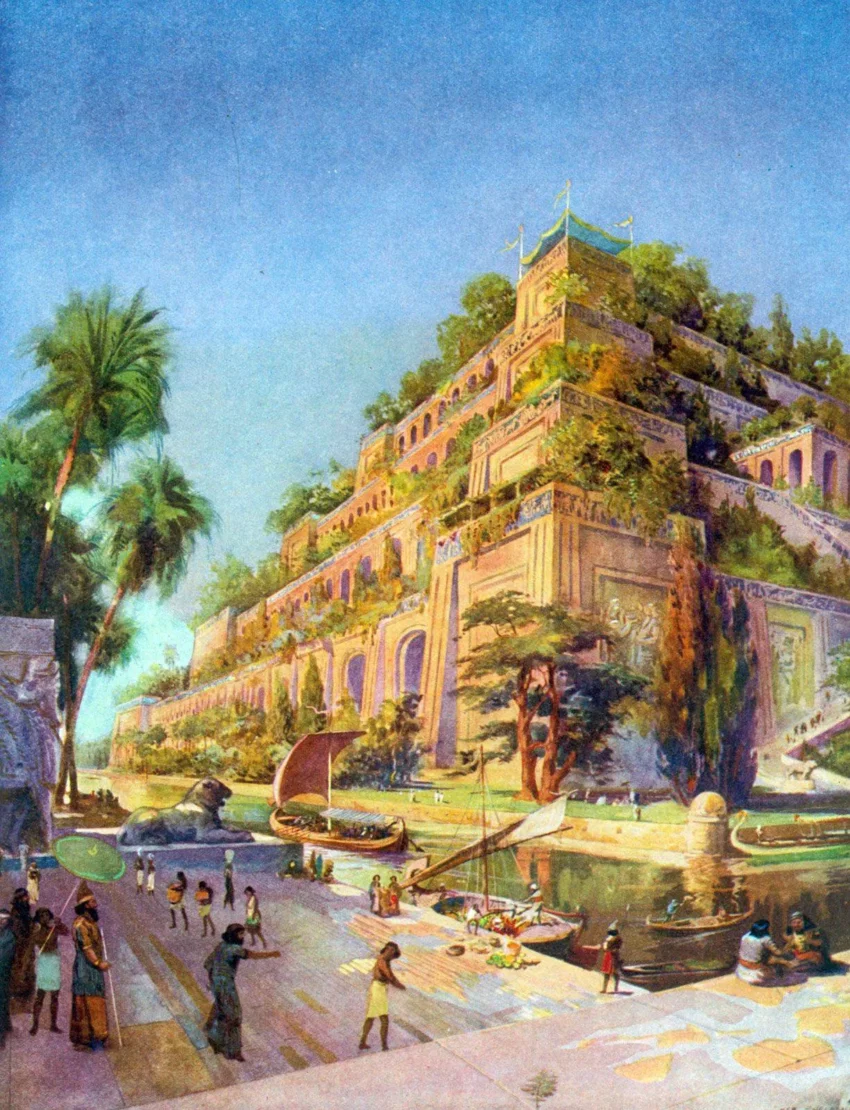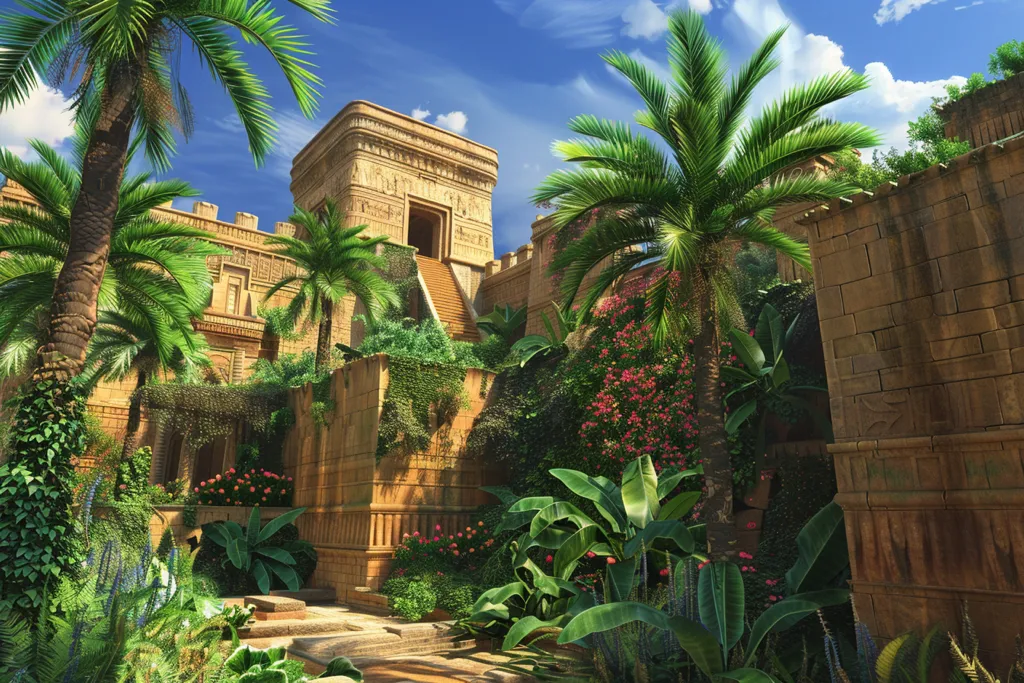Summary
The Enigma of the Hanging Gardens
The Hanging Gardens of Babylon stand as one of the Seven Wonders of the Ancient World, yet their existence remains shrouded in mystery. Accounts describe these gardens as a feat of engineering, with lush vegetation cascading from terraces constructed high above the ground. They symbolized the might and innovation of Babylon and King Nebuchadnezzar II, who purportedly built the gardens to assuage his wife’s longing for the green hills and valleys of her homeland. However, the lack of concrete archaeological evidence and contemporaneous records has led scholars to speculate about their actual presence. Some suggest they were purely mythical or located elsewhere. Despite the unknowns, the image of the Hanging Gardens continues to capture people’s imagination and represents the splendor of ancient civilizations.
Get your dose of History via Email
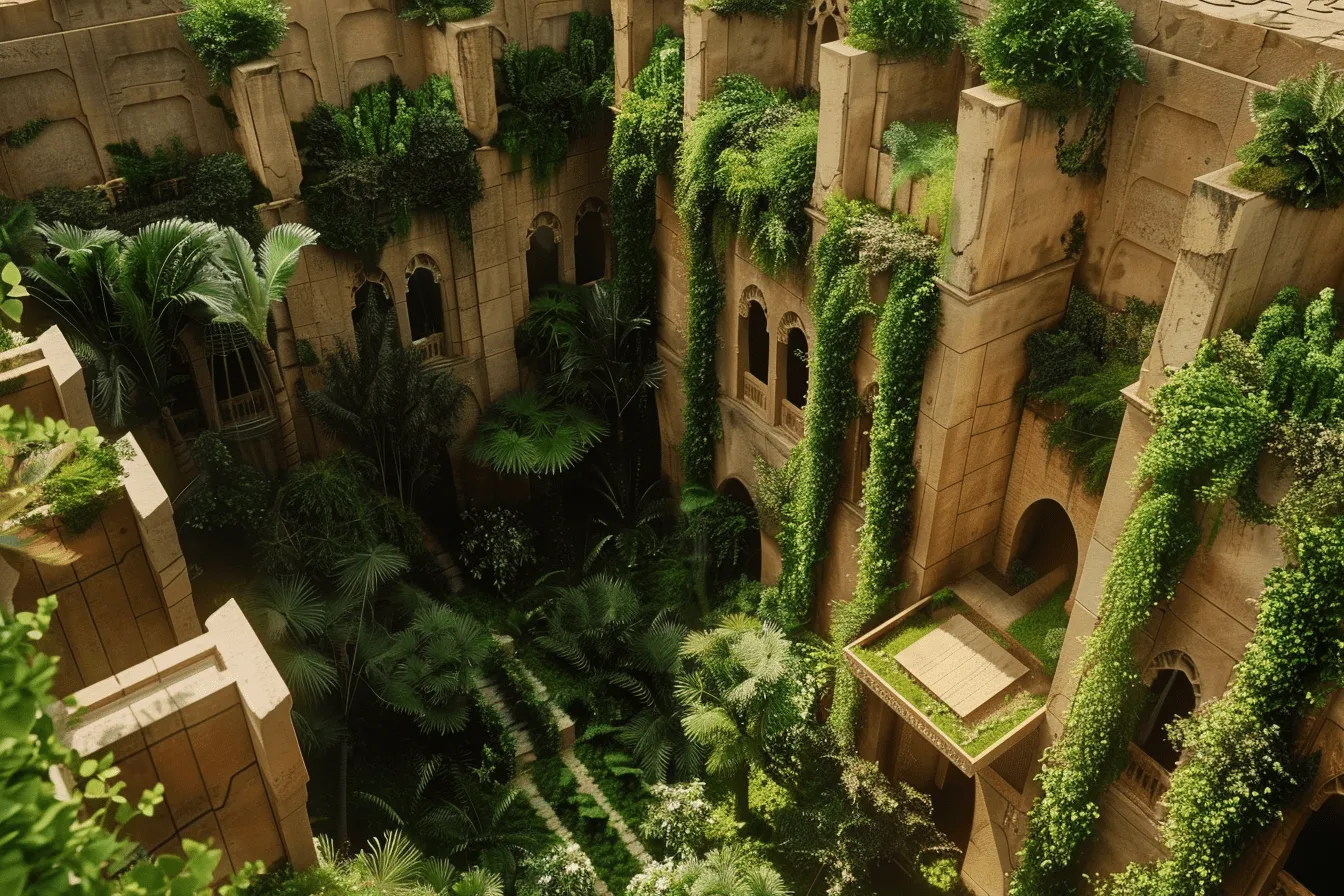
The Tower of Babel: A Monumental Tale
In contrast, the Tower of Babel’s story from biblical accounts conveys a cautionary tale of ambition and divine will. According to the Book of Genesis, humanity, speaking a single language, sought to build a tower reaching the heavens, defying God. In response, God confounded their speech, disseminating them across the earth with different languages, effectively halting the construction. The Tower of Babel has ingrained itself into cultural and linguistic history as an explanation for the origin of diverse languages. Today, the tale of Babel not only provides a backdrop to the city’s historical prominence but also offers a metaphor about the limits of human pride and the value of cultural diversity. Though its physical remnants are lost, the Tower of Babel’s legacy persists, challenging us to ponder the fine line between achievement and hubris.
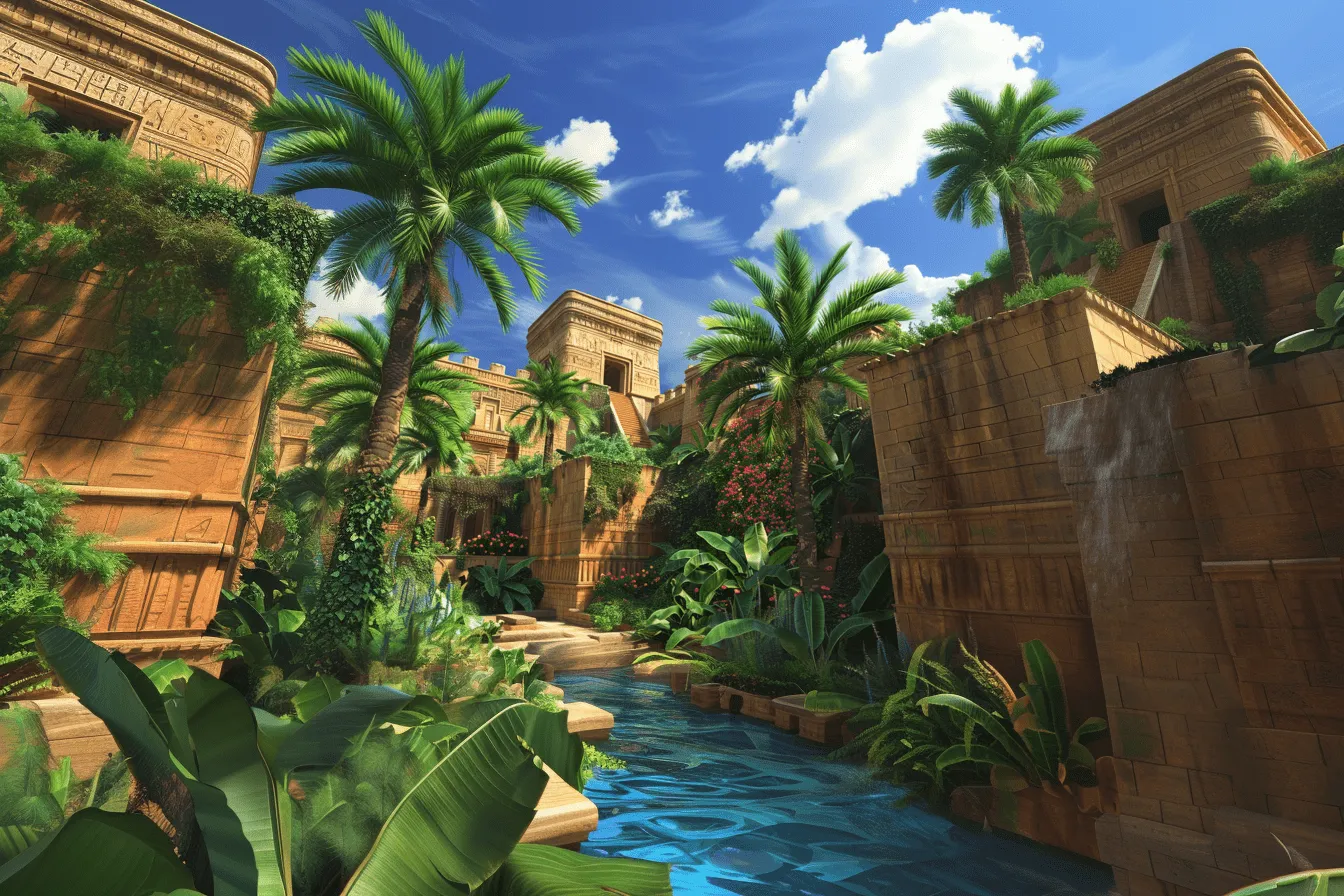
Babylon’s Geographic Location
Babylon, once a city of grandeur, sits in present-day Iraq. The ruins lie near the town of Hillah, in Babil Governorate. They sprawl over an area along the Euphrates River. This proximity to the river made the city an ancient trade hub. Babylon’s heart was once Mesopotamia’s pulse, roughly 85 kilometers south of Baghdad. Today, it invites both scholars and tourists alike. Babylon’s roots blend with the fertile crescent. The region is known as the cradle of civilization.
Strategic Importance in Antiquity
The city’s strategic location influenced its historical prominence. Babylon sat at the crossroads of trade routes. This positioned it for commercial and cultural exchanges. The Euphrates provided water, vital for the city’s growth and prosperity. It allowed Babylon to thrive as an ancient metropolis. The city benefited from the fertile land around it. This land blessed it with abundant resources to sustain a large population. Babylon became famous, partly due to its geographic advantages. These advantages shaped its role in history as a center for power, learning, and culture.
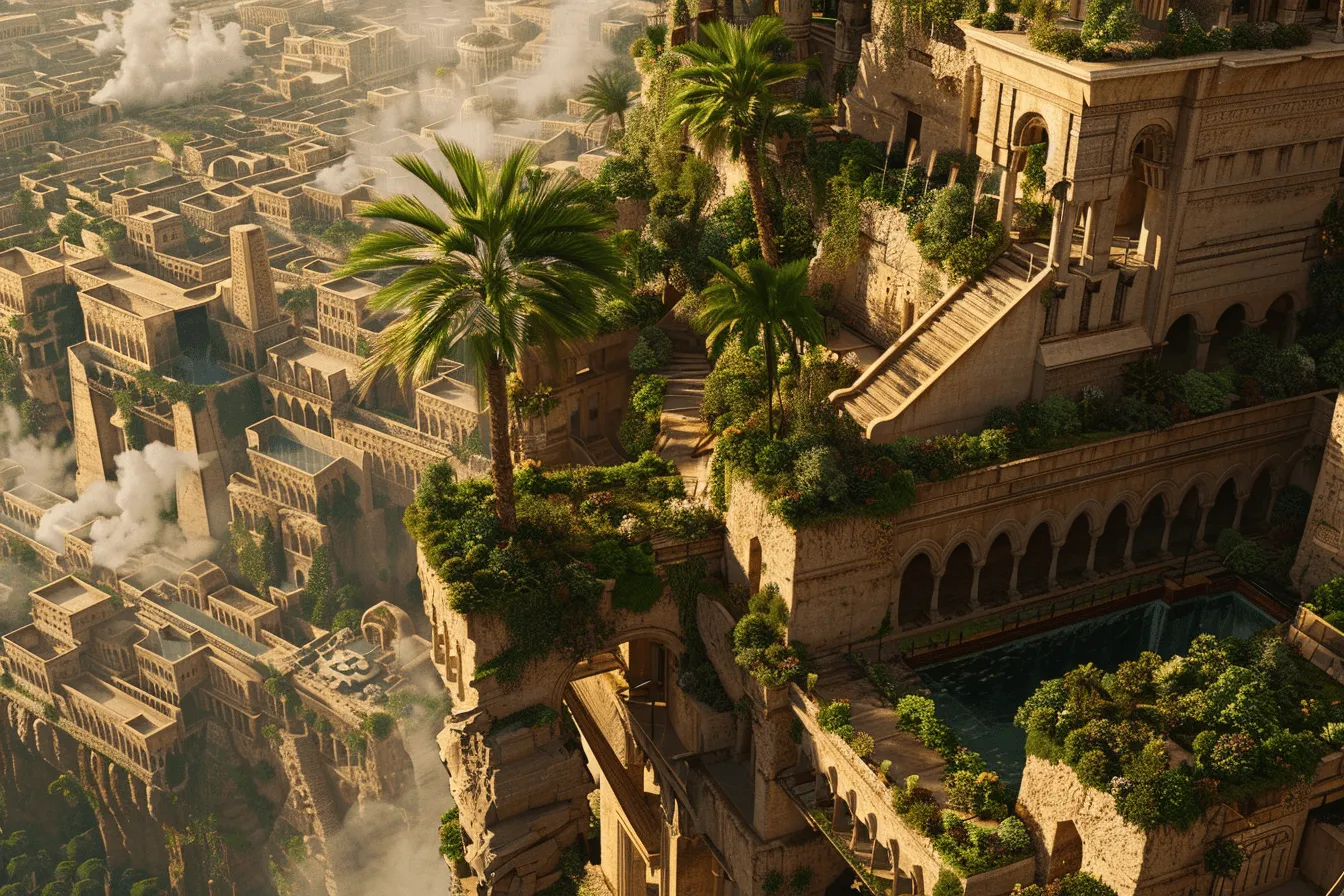
Hammurabi’s Capital: A Landmark of Innovation
Known as the city of Hammurabi, Babylon realized its peak under his rule. Hammurabi expanded the city’s domains. He turned it into one of history’s eminent capitals. His code of laws paved the way for legal standards. The city walls, once deemed impregnable, stood testament to Babylon’s might. The Hanging Gardens, one of the Seven Wonders, highlighted its architectural innovation. These achievements mirrored the site’s advantageous location. Babylon developed pioneering advancements. It benefitted from resource-rich environs and strategic placement. Its location connected it to the broader world of ancient civilization.
The Rise of the Neo-Babylonian Empire
Origins of Power
The Neo-Babylonian Empire, often hailed for its architectural marvels, began with Nabopolassar. He overthrew the Assyrians with the Medes’ help. After this, he laid the foundation for a renewed Babylonian rule. Under his reign, Babylon saw a resurgence of cultural and architectural endeavors. This period gave rise to one of the ancient world’s wonders, the Hanging Gardens. His vision set the stage for a cultural revival that would define an era.
Expansion and Flourishing
Nabopolassar’s success became a stepping stone for his son, Nebuchadnezzar II. He took the throne and propelled the empire to new heights. His military campaigns expanded the empire’s reach and brought wealth, as recorded by historians. Nebuchadnezzar II’s rule marked an age of massive building projects and cultural achievements. These feats included the famed Ishtar Gate. He not only fortified the empire but also invested in its beauty and infrastructure. His legacy includes a blend of military might and a profound cultural impact.
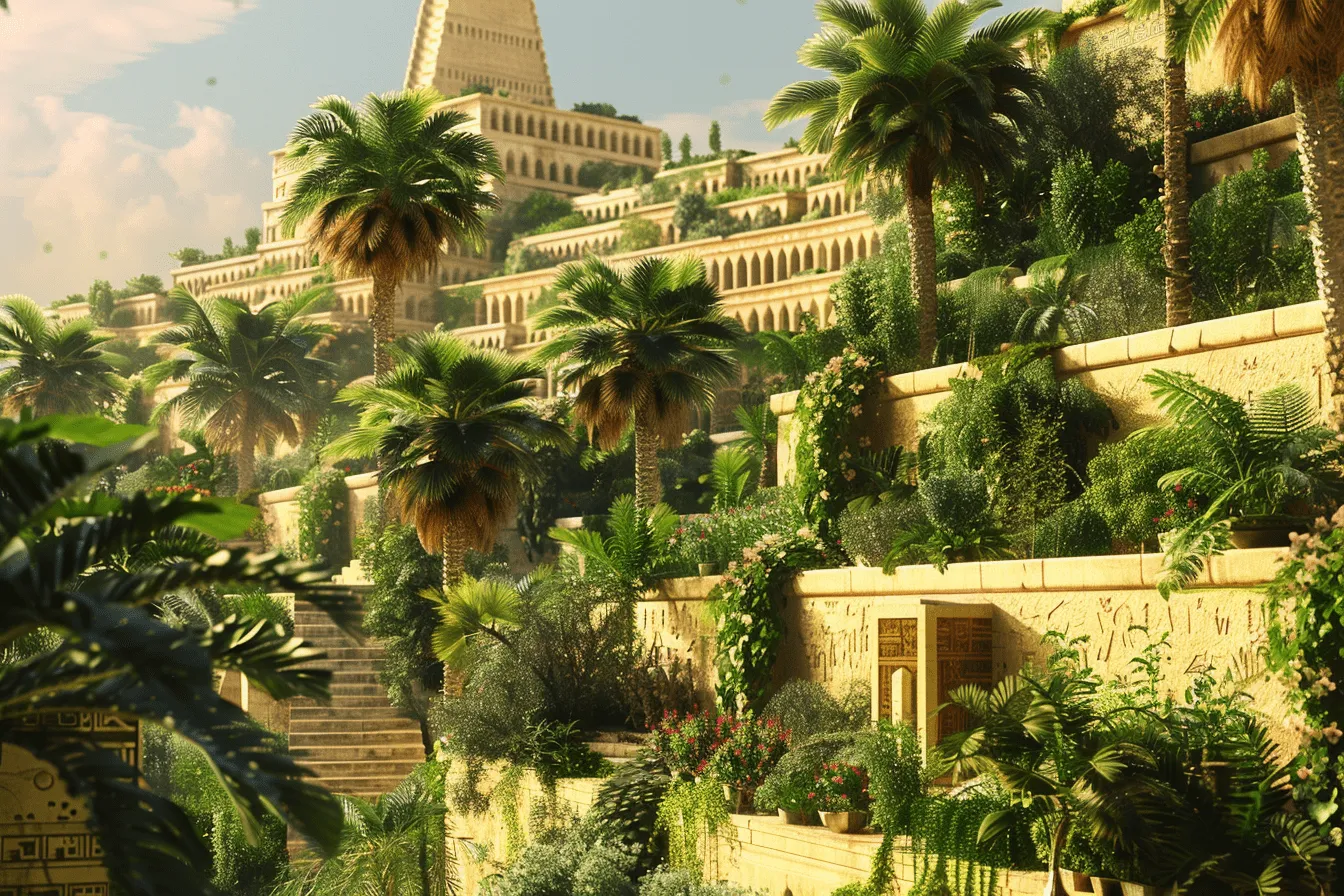
Decline and Legacy
Despite the power and prestige, the Neo-Babylonian Empire was not to last. Its rapid growth came with internal weaknesses. Historical texts suggest that while the empire thrived outwardly, it faced challenges from within. These led to its eventual conquest by the Persians. Yet, the impact of the Neo-Babylonian era endures through its contributions to astronomy, literature, and law. It also breathed life into one of humanity’s richest cultural tapestries. The story of the Neo-Babylonian Empire is a testament to the impermanence of empires, yet the immortality of their contributions to civilization.
The Decline and Fall of Babylon
Last Days of the Babylonian Empire
The once mighty city of Babylon, known for its grand walls and the Hanging Gardens, met its demise under the rule of Nabonidus and his son Belshazzar. These last kings of the Neo-Babylonian Empire showed neglect for religious duties, fueling discontent among their people. The empire’s fall became inevitable when the Persian king, Cyrus the Great, laid siege in 539 BCE. Unrest in Babylon worked in Cyrus’s favor, as the city quickly surrendered without significant resistance. This marked the end of Babylon’s independence and the beginning of Persian rule.
Factors Leading to the Collapse
Babylon’s decline was not sudden but a result of a series of events and internal issues. The political turmoil within the empire, rising taxes, and the priesthood’s dissatisfaction were significant factors. Moreover, the economic decline due to failed harvests added to the people’s hardship. Historians point to a weakening of central power as local governors grew strong and disloyal. Archaeological evidence reveals a change in Babylon’s landscape, reflecting the empire’s waning power and the diminishing of its once flourishing civilization.
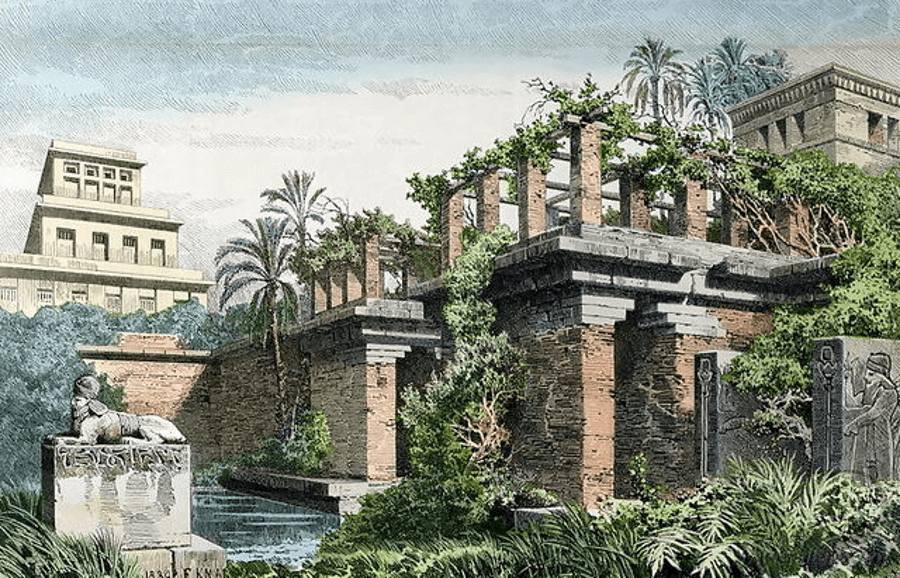
Cultural Legacy and Interpretations
Babylon’s cultural impact remained, influencing future civilizations. The city’s architectural achievements and cuneiform literature became part of the cultural heritage in the Middle East. Babylon also featured prominently in religious texts, often symbolizing decadence and downfall. Modern interpretations of its history come from deciphered inscriptions and clay tablets. While there are gaps in historical records, latest archaeological techniques refine our understanding of Babylon’s last days. Its story is a mixture of facts weaved with legends, leaving a legacy that still captivates the world.
For further reading and to validate the information presented in this article, the following sources are recommended:
Frequently Asked Questions
Who Built the Hanging Gardens of Babylon?
The Hanging Gardens of Babylon are traditionally ascribed to King Nebuchadnezzar II, who reigned in the 6th century BCE. This attribution, however, is more rooted in historical tradition than in concrete evidence. The story that the gardens were built for Queen Amytis is also speculative, lacking solid historical backing.
When Were the Hanging Gardens of Babylon Built?
It is believed that the Hanging Gardens might have been constructed around 600 BCE, during King Nebuchadnezzar II’s reign. This era was marked by significant architectural developments in Babylon. Nonetheless, there is no direct evidence that definitively links the construction of the Gardens to this specific period.
Why Were the Hanging Gardens of Babylon Built?
Legend has it that King Nebuchadnezzar II built the Hanging Gardens for his wife, Queen Amytis, to ease her homesickness. This popular narrative, however, is not corroborated by historical evidence and remains part of folklore.
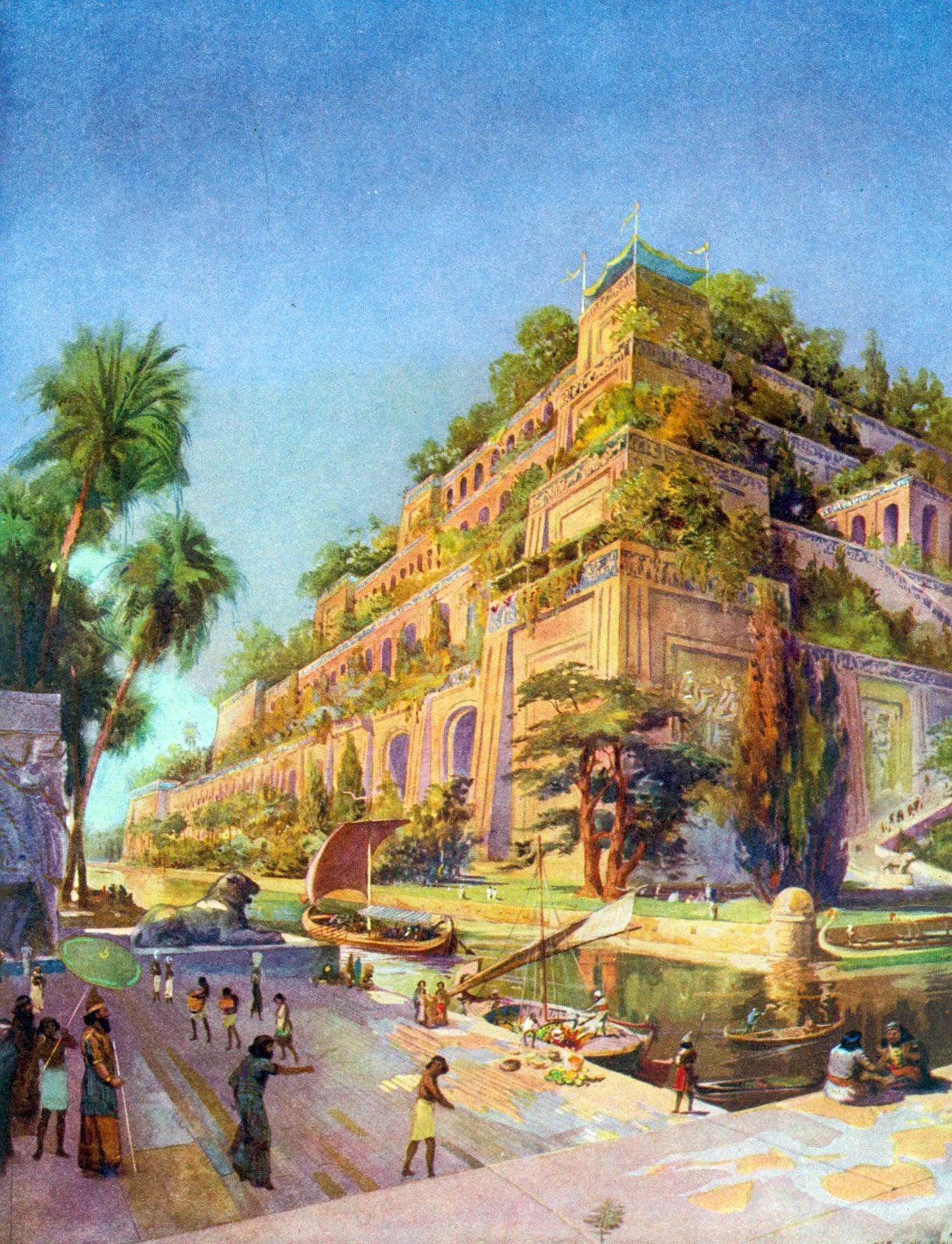
What Did the Hanging Gardens of Babylon Look Like?
Later Greek sources provide descriptions of the Hanging Gardens as a series of terraced gardens filled with diverse plant life. These accounts are not contemporary and lack archaeological support, leaving the exact appearance of the Gardens uncertain.
Where Were the Hanging Gardens of Babylon Located?
Traditionally, the Hanging Gardens are believed to have been situated in Babylon, near the modern city of Hillah in Iraq. The absence of conclusive archaeological evidence, however, has led some scholars to propose alternative locations, including Nineveh.
How Were the Hanging Gardens of Babylon Built?
Historical accounts suggest that the Hanging Gardens were comprised of terraced gardens and featured an advanced irrigation system. Such construction methods were feasible for the time, but there is no specific evidence confirming these techniques were used in the Hanging Gardens.
What Happened to the Hanging Gardens of Babylon?
The ultimate fate of the Hanging Gardens is unclear. Various theories have been proposed, including their destruction by earthquakes or a gradual decline. However, these theories are speculative, as conclusive evidence is lacking.
When Were the Hanging Gardens of Babylon Destroyed?
The precise date or time period of the Hanging Gardens’ destruction remains unknown. The theory that they were destroyed around the 2nd century BCE is one of several, but it lacks firm historical validation.
How Did the Hanging Gardens of Babylon Get Water?
Ancient sources mention an advanced irrigation system for the Hanging Gardens, possibly involving technologies like a chain pump or screw pump. While such technologies were within the realm of possibility at the time, there is no direct evidence to confirm their use in the Hanging Gardens.

